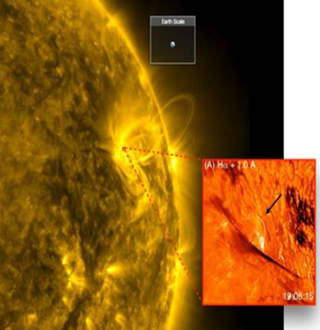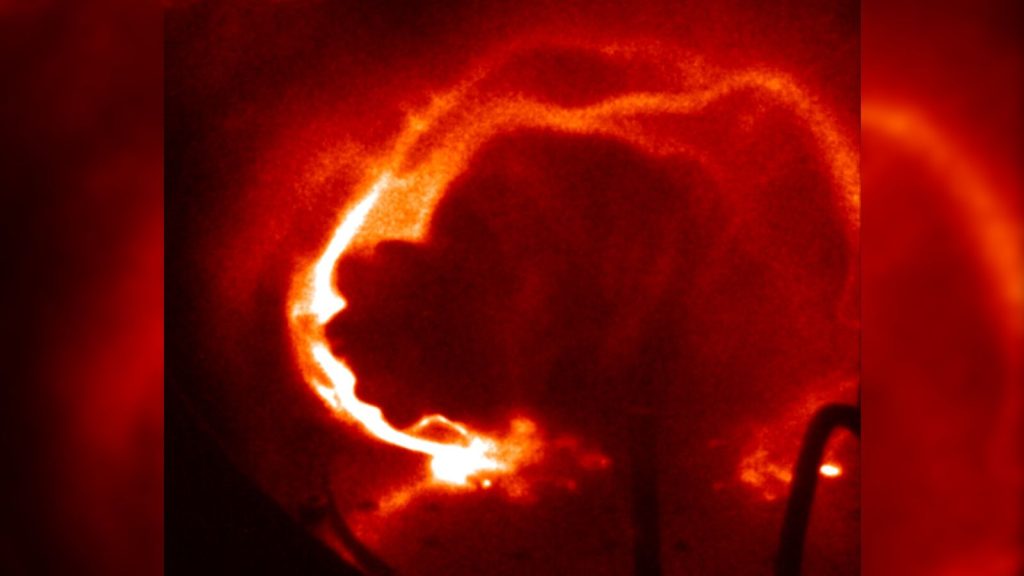Syllabus: GS3: Awareness in the fields of IT, Space, Computers, Robotics, Nano-technology, Bio-technology and issues relating to Intellectual Property Rights.
Context:
Recently, a team of astronomers, led by researchers from the Indian Institute of Astrophysics (IIA), has discovered miniature plasma loops in the lower layers of the Sun’s atmosphere, offering new insights into how the Sun stores and unleashes magnetic energy.
More on the News

- Researchers believes that these coronal micro-loops may hold critical clues to understanding high-energy phenomena such as solar flares and plasma jets.
- India’s upcoming National Large Solar Telescope (NLST)—a 2-meter aperture facility planned near Pangong Lake in Ladakh—is expected to enhance the country’s capabilities in solar observation, particularly in high-resolution chromospheric imaging and magnetic field mapping.
Miniature Plasma Loops
- These tiny loops found in the solar corona are just 3,000 to 4,000 kilometres long but less than 100 kilometres wide.
- They are short-lived, existing for only a few minutes, making them extremely difficult to detect using traditional solar observation methods.
Research Methodology
- Discovery was made possible by combing data from multiple observatories including:
- The Goode Solar Telescope at Big Bear Solar Observatory (BBSO)
- NASA’s Interface Region Imaging Spectrograph (IRIS)
- The Solar Dynamics Observatory (SDO)
- The research team used multi-wavelength observations—visible, ultraviolet, and extreme ultraviolet—to track these elusive features across different layers of the Sun’s atmosphere: the chromosphere, the transition region, and the corona.
- Using the H-alpha spectral line, a key diagnostic for the chromosphere, the loops were observed as bright, delicate arcs similar to their larger counterparts in the corona.
- The team also detected significant spectral broadening using IRIS data, suggesting highly non-thermal activity due to magnetic fields—a sign of magnetic reconnection, where tangled magnetic lines break and reconnect, releasing intense energy.
- The team employed Differential Emission Measure (DEM) analysis to determine the plasma temperature within the loops.
Differential emission measure (DEM)
- Differential emission measure (DEM) analysis is a technique used to reconstruct the temperature distribution of plasma in astrophysical objects, particularly in the solar corona, from observed spectral data.
- It provides insights into the heating mechanisms and physical properties of these plasmas.
- It showed plasma temperatures of several million degrees, enough to emit extreme UV radiation seen by SDO’s Imaging Assembly.
Significance of Miniature Plasma Loops
- Unlocking Solar Mysteries: The loops are directly linked to the Sun’s magnetic field and its complex interactions, which are responsible for many of the Sun’s energetic phenomena.
- Understanding Energy Release: By studying these loops, scientists can better understand how magnetic energy is built up, stored, and then explosively released in events like solar flares.
- Clues to Solar Flares: These miniature loops can act as precursors to larger solar flares, offering a chance to predict and understand these powerful events that can affect Earth’s space environment.
- Advancing Solar Physics: The study of these loops is pushing the boundaries of solar physics, helping researchers refine their models of the Sun’s atmosphere and its dynamic processes.
- Technological Advancements: The discovery and study of these loops rely on advanced telescopes and multi-wavelength observations, pushing the development of new technologies for solar research.
Solar Corona
- The Solar Corona is the outer atmosphere of the Sun, visible only during solar eclipses or with specialized telescopes called coronagraphs.
- The corona is the source of the solar wind, a stream of charged particles that flows outward through our solar system.
- The corona is also the source of Coronal Mass Ejections, large eruptions of plasma and magnetic field that can impact space weather.

